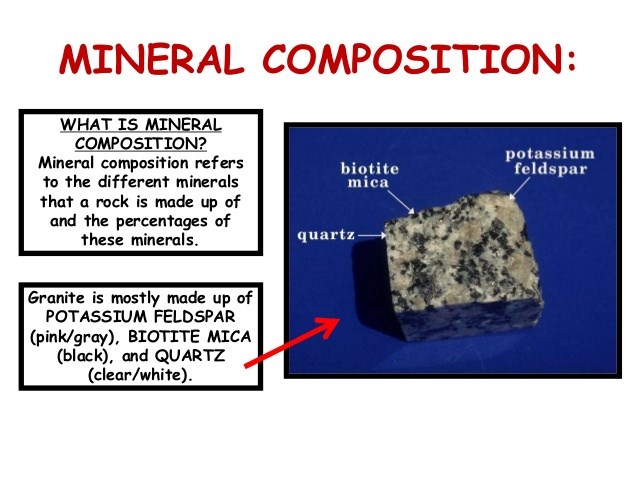*Please note this Earth Cache will require you to enter St. Paul’s Cathedral, any member of the public is free to do so during the cathedrals opening hours.
Opening Hours: Monday-Friday: 8am – 6pm Saturday: 9am – 4pm Sunday: 7:30am – 7:30pm Public Holidays: 11am – 3pm.
St Paul's Cathedral is an Anglican cathedral. It is the cathedral church of the Diocese of Melbourne and the seat of the Archbishop of Melbourne who is also the metropolitical archbishop of theProvince of Victoria. The location for the cathedral marks the place of the first Christian service held in Melbourne in 1835.
St Paul's is built in a revival of the style known as Gothic transitional/Neo Gothic being partly Early English and partly Decorated. It was designed by the distinguished English architect William Butterfield, who was noted for his ecclesiastical architectural works. The foundation stone was laid in 1880. Butterfield never saw the site and the building work was frequently delayed by disputes between Butterfield, who was in England, and the church authorities in Melbourne. Butterfield resigned in 1884 and the building was completed by a local architect, Joseph Reed. Consequently, the design of the spires differs greatly from those originally planned (similar to those built at Christ Church, South Yarra). The cathedral chapter retains a scale model of the original completed design.
The cathedral was consecrated on 22 January 1891, but the spires designed by John Barr of Sydney were only finished in 1931.
St Paul's is unusual among Melbourne's more notable 19th-century public buildings in that it is not made from bluestone, the city's dominant building material. Instead it is made from sandstone from the Barrabool Hills and limestone embellishments of Waurn Ponds limestone, both from near Geelong, giving the cathedral a warm yellow-brown colouring rather than Melbourne's characteristic cold blue-grey. Because the spires are built from Sydney sandstone and are 40 years newer, they are of a darker texture than the older parts of the building. St Paul's Moorhouse Tower is the second highest Anglican spire in the world, the tallest being that of Salisbury Cathedral.
We found this part fascinating, and we have added a complete list of the stone and its sources are below.
STONE USED IN THE CATHEDRAL
Based on list from Robert King, Dept Natural Resources, Victoria, 1996; with additions.
EXTERNAL
BASE - Basalt (Footscray and Brunswick, Victoria)
SUPERSTRUCTURE – Sandstone (Barrabool, Victoria); 1960s restoration – Sandstone (Barrabool; Guiting UK)
DECORATIVE COLUMNS (windows) – Basalt (Malmsbury, Victoria)
DRESSINGS AND QUOINS – Limestone (Waurn Ponds, Victoria)
STEPS – Granite (Harcourt, Victoria)
SPIRES – Hawkesbury Sandstone (Pyrmont, NSW)
INTERNAL
NAVE WALLS AND COLUMNS
Basalt (Malmsbury and Brunswick, Victoria)
Lower walls and columns - Hawkesbury Sandstone (Pyrmont, NSW)
Upper walls – Limestone (Waurn Ponds, Victoria)
STEPS – Red Granite (Gabo Island, Victoria); some additions 1990s Cowra NSW
PRESBYTERY COLUMNS – coarse grained pink granite (Peterhead, Scotland)
MACARTNEY CHAPEL – Sandstone (Gosford, NSW); Basalt (Malmsbury)
ASCENSION CHAPEL
Reredos –mosaic (Italy)
Altar – Brown Alabaster (UK) and Breche Sanguine marble (Algeria)
Paving - white (Carrara); red (Rosa Verona); grey (Bardiglione); green (Genoa Verde, Val d’Aosta)
SANCTUARY
Steps across the whole width of the Sanctuary and Choir – Rouge Royale (Belgium)
Arcade columns –red granite (Gabo Island, Victoria)
Columns – pink granite (Peterhead, Scotland)
Reredos – Salviati mosaic (Italy)
Reredos pilasters and shelf behind altar – Marble, Pink Ogwel (Devonshire)
Reredos tracery – Alabaster (Derbyshire)
Reredos panel behind altar – Marble, Pink Petitor (Devonshire)
Reredos colonettes – Marble, Grey Ipplepen (Devonshire)
Perry Memorial (Sediliae) – Marble Red Cork (Ireland); alabaster (Derbyshire)
Archbishop’s sedilia – Red marble - Brocatella (Italy); Cream-red marble - Caleula (NSW)
FONTS
Baptismal – red granite (Gabo Island, Victoria); columns – red porphyry (Tallangatta, Vic)
Immersion – Australian marble (unknown most likely Chillegoe, QLD); designed Alexander North; completed 1913
By the 1990s the constant traffic vibration in central Melbourne led to concerns about the structural soundness of the cathedral, particularly its spires. A public appeal, led by the then Dean of Melbourne, David Richardson, raised A$18 million to restore the spires and improve the interior of the building. The seven-year restoration project was completed in 2009, under the guidance of Falkinger Andronas Architects and Heritage Consultants (now Andronas Conservation Architecture). The restoration works were undertaken by Cathedral Stone and were acknowledged by the Australian Institute of Architects, the Victorian Chapter Heritage Architecture Award 2009 and the Lachlan Macquarie National Award for Heritage Architecture 2009.
*Standing at Melbourne’s busiest intersection we hear you say what is the Earth Science lesson here? Although there is a variety of stone used we wanted to highlight a unique aspect in the Granite here.
For those of you not familiar with Granite:
Granite is the most common igneous rock found at Earth's surface. It is one of the most commonly recognised igneous rocks because it is used to make so many objects that we encounter in daily life. These include counter tops, floor tiles, paving stone, curbing, stair treads, building veneer, monuments and cooking utensils. Many natural landmarks are also made of granite.
Granite is a light-colored igneous rock with grains large enough to be visible with the unaided eye. It forms from the slow crystallisation of magma below Earth’s surface. Granite is composed mainly of quartz and feldspar with minor amounts of mica, amphiboles and other minerals. This mineral composition usually gives granite a red, pink, grey or white colour with dark mineral grains visible throughout the rock.
Granite is nearly always massive and very hard. The average density of granite is between 2.65 and 2.75 g/cm, its compressive strength usually lies above 200 MPa, and its viscosity near STP is 3–6 • 10 Pa·s.
The melting temperature of dry granite at ambient pressure is 1215–1260 °C it is strongly reduced in the presence of water, down to 650 °C at a few kBar pressure.
Granite has poor primary permeability, but strong secondary permeability.
*We have brought you to this location as it shows good examples of Red Granite.
Mostly granite is grey but it can be several different colours. Granite can be black, dark-red and rarer green or bluish-grey colour!
What does it depend on? It depends on mineral composition of granite. The colour of feldspar especially strongly influences the decorativeness of granite. But feldspars are white. Feldspar breeds get grey and black colours from the admixture of dark-coloured minerals - mica or pyroxenes.

Granite consists of three main minerals: quartz and two kinds of feldspars (potassium and calcium-sodium) and mica. They form the structure of granite with equal amounts (30%). They all are colourless or white. And pyroxenes, amphibole or mica, being dark minerals, make 10%; they will be noticed in granite as separate scales or grains. Let's look at a stone from a distance. Everything merges into grey colour. Obviously, the more dark minerals has granite - the darker it is. The colour of some granite seems darker because of a dark quartz variety such as morion.
How does granite become red? Bright red or pink feldspar are included into their mineral composition. They can be met in all parts of the world. The smallest crystals of hematite (oxid of iron) and red iron ore, disseminated regularly on all crystal of feldspar, give colouring to feldspar. Painting abilities of hematite are exclusively great. Feldspar takes thick red colouring already when there is 0,7-1,0% of hematite in it. Granite feldspar acquires the pink colouring when maintenance of hematite does not exceed 0,3-0,4%. So, red colour of granite is a result of difficult and not always ordinary processes. H
How does granite become green? Such colour is given to granite due to inclusions of green potassium feldspar, which is known for a long time as a semiprecious stone - amazon-stone (=amazonite).
To log this Earth Cache we require you to wander around and look at the Cathedral from different angles, consider the information given and perhaps if you need, do some research of your own, then message us with the following answers to the best of your ability;
1. Find either the Presbytery columns or Arcade columns and describe the colours you can see in the Granite, has it been polished or left raw? Why do you think it has been presented this way?
2. Can you see any other Granite in use, what colour is it and what is it being used for?
3. A photo of your team, GPS near GZ with your log and answers. (optional)
You are welcome to log your answers straight away to keep your TB's and Stats in order but please message us with your answers within 24 hours. Cachers who do not fulfil the Earth Cache requirement will have their logs deleted.
Visitors are welcome to obtain a $5 photo permit from the Cathedral Shop and take photographs for personal use during visiting hours, but photography is not permitted during services.

Source: Wikipedia, art-granite.com, cathedral.org.au.
